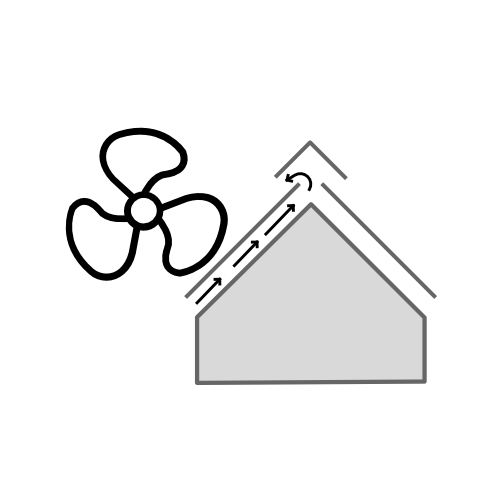
For architects, understanding the importance of roof ventilation mats, also known as ventilation layers, is crucial because these specialized materials play a vital role in promoting airflow and managing moisture within roof assemblies, preventing issues like condensation, mold growth, and structural damage. This blog post focuses on the function and benefits of roof ventilation mats, providing essential guidance for architects. By collaborating with manufacturers and considering specific project requirements, architects can select the right roof ventilation mat for optimal results.
Roof ventilation mats effectively manage moisture by allowing air to circulate freely between the roof sheathing and the roofing material. This airflow helps prevent the buildup of excess humidity, reducing the risk of condensation and associated moisture-related problems.
A key function of roof ventilation mats is to act as a thermal break, creating an air gap between the roof covering and the sheathing. This separation allows warm, moist air to escape and be replaced by cooler, drier air, minimizing the formation of condensation, especially in regions with fluctuating temperatures and high humidity.
By facilitating air movement within the roof assembly, ventilation mats contribute to improved energy efficiency. Proper ventilation helps regulate the temperature in the attic or roof space, reducing heat buildup during hot seasons and minimizing heat loss in colder climates. This can lead to potential energy savings and increased comfort.
Roof ventilation mats significantly prolong the lifespan of roofing materials by reducing excessive heat and moisture exposure. By mitigating the risk of warping, cracking, and curling, these mats help protect the integrity of the roofing finishes and the underlying roof components.
Roof ventilation mats act as a buffer zone, reducing sound transmission through the roof panels. They absorb and dissipate sound waves, making them advantageous in areas with high noise levels. Architects can leverage ventilation mats to minimize exterior noise intrusion, especially near airports, busy roads, or industrial zones.
Roof ventilation mats are lightweight and easy to handle during installation. Their flexibility allows them to conform to various roof shapes and contours, making them suitable for roofs with steep slopes, multiple angles, or unique architectural features. Architects can easily trim, bend, and shape ventilation mats to seamlessly integrate them into the roof assembly, ensuring consistent airflow and ventilation.
Roof ventilation mats play a crucial role in maintaining a healthy and durable roof system. By understanding their function and benefits, architects can make informed decisions regarding moisture management, condensation prevention, energy efficiency, roofing material lifespan, sound reduction, and installation ease. When selecting a roof ventilation mat, it is important to refer to manufacturers’ specific requirements and collaborate with them to ensure the right product is chosen for each project.
